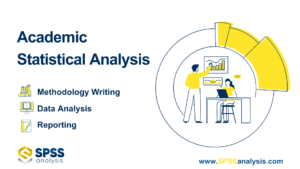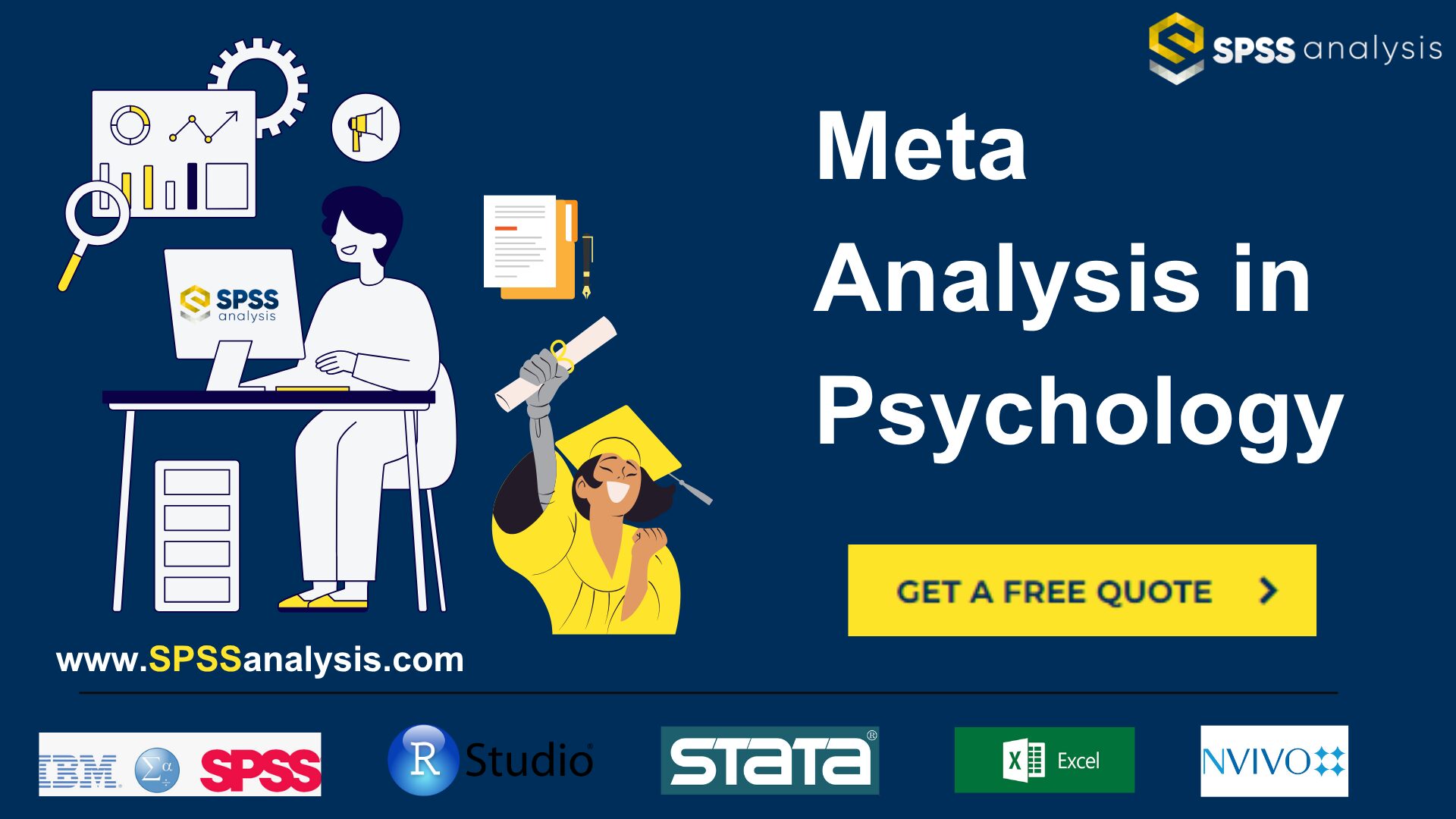Meta Analysis in Psychology
Need an Expert for Meta Analysis in Psychology?
We specialise in psychological meta-analysis, offering end-to-end support for PhD candidates, academics, and researchers. From effect size calculation to full statistical reporting, our team delivers tailored solutions using SPSS, R, Stata, CMA, and more—regardless of the deadline or complexity.
How Our Meta-Analysis Service WorksA clear 3-step process to guide you from research planning to final statistical reporting—tailored to psychology and health sciences.
Meta Analysis in Psychology
Meta-analysis is a statistical method used to combine and summarize results from multiple individual studies on a specific topic. In psychology, it plays a vital role in synthesizing research findings to inform theory, clinical practice, and policy. By aggregating data across diverse studies, researchers gain more precise and generalizable insights than from any single study alone.
What Does Meta-Analysis Mean in Psychology?
Meta-analysis in psychology refers to a statistical technique that combines results from multiple independent studies on the same topic to produce a single, comprehensive estimate of an effect. Rather than relying on the findings of one study, meta-analysis pools data to improve statistical power, detect patterns, and provide more robust conclusions. It plays a crucial role in psychological science by resolving conflicting results, evaluating treatment efficacy, and guiding evidence-based practice. This method is especially useful in areas where individual studies may be small, varied in quality, or yield inconsistent outcomes.
How Is Meta-Analysis Used in Psychology?
Meta-analysis is used in psychology to assess the efficacy of interventions, explore theoretical constructs, and summarize the state of evidence across a range of topics. It allows researchers to:
- Evaluate treatment outcomes (e.g., effectiveness of CBT for depression)
- Investigate moderating variables (e.g., age, gender, context)
- Compare the effects of different interventions or conditions
By pooling data, meta-analysis increases statistical power and provides a more comprehensive picture of psychological phenomena.
What Are the Types of Meta-Analysis in Psychology?
Psychology researchers can choose from various types of meta-analyses depending on their goals and data availability. Each type offers unique strengths and levels of complexity:
- Traditional Meta-Analysis: Combines summary effect sizes from published studies.
- Individual Participant Data (IPD) Meta-Analysis: Uses raw data from each study, offering increased precision.
- Network Meta-Analysis: Allows comparison of multiple treatments across studies that may not directly compare them.
- Bayesian Meta-Analysis: Incorporates prior distributions and offers probabilistic interpretations of effect sizes.
Choosing the appropriate type depends on your research question, data access, and statistical expertise.
Key Concepts You Need to Know Before Starting a Meta-Analysis
Before beginning a meta-analysis, researchers must understand foundational concepts that influence design, analysis, and interpretation. These include:
- Systematic Review: A rigorous process for identifying, evaluating, and summarizing all relevant research.
- Fixed vs. Random Effects Models: Fixed-effect assumes a common true effect; random-effects allow for study-level variability.
- Effect Size: A standardized measure (e.g., Cohen’s d, Hedges’ g) quantifying the strength of an effect.
- Heterogeneity (I², Q-test): Indicators of variability among study results.
- Forest Plot: A graphical display of individual and combined effect sizes.
- Funnel Plot: Used to detect asymmetry and publication bias.
- Subgroup Analysis: Assesses effects within defined subgroups.
- Publication Bias Analysis: Tests (e.g., Egger’s test) and corrections (e.g., trim-and-fill) to address biased reporting.
Understanding these elements is critical for designing a robust and transparent meta-analysis.

What Are the Assumptions of Meta-Analysis?
Meta-analysis relies on several statistical and methodological assumptions. Violating these can lead to biased or invalid results. Key assumptions include:
- Studies included are sufficiently similar (conceptually and methodologically)
- Effect sizes are independent
- Measurement tools and outcomes are comparable
- Data are normally distributed (for some models)
Researchers should test for heterogeneity and conduct sensitivity analyses to check the robustness of their findings.
How Is Meta-Analysis Data Collected in Psychology?
The data collection phase is foundational for a valid meta-analysis. In psychology, this typically involves:
- Defining a clear research question and inclusion/exclusion criteria
- Searching academic databases (e.g., PsycINFO, PubMed, Scopus) using specific keywords
- Screening studies based on titles, abstracts, and full texts
- Extracting data: effect sizes, sample sizes, means, standard deviations, study characteristics, and methodological quality
- Coding studies systematically to prepare for analysis
Proper documentation and reproducibility are essential at every step.
What Is the PRISMA Flow Diagram in Meta-Analysis?
The PRISMA (Preferred Reporting Items for Systematic Reviews and Meta-Analyses) flow diagram is a standardized tool for documenting the study selection process. It enhances transparency and replicability by clearly showing how studies were identified, screened, and included or excluded.
The flow diagram typically includes four stages:
- Identification: Total records found via database searching and other sources
- Screening: Records excluded after title/abstract screening
- Eligibility: Full-text articles assessed and excluded with reasons
- Included: Final studies included in the meta-analysis
Using a PRISMA diagram ensures clarity in reporting and helps readers assess the rigor of your review process.
Common Challenges in Conducting Meta-Analysis in Psychology
While meta-analysis is powerful, it also presents several methodological and practical challenges in psychological research:
- Publication bias: Studies with non-significant results are less likely to be published.
- Inconsistent reporting: Essential data (e.g., means, SDs) may be missing.
- High heterogeneity: Differences in study design, population, and interventions complicate synthesis.
- Duplicate data: Same datasets published in multiple papers.
- Quality variation: The reliability of conclusions depends on the methodological quality of included studies.
Addressing these challenges requires careful screening, transparency, and appropriate sensitivity analyses.

How to Calculate Effect Sizes for Meta-Analysis in Psychology
Effect sizes are the core building blocks of any meta-analysis. In psychology, different types of effect sizes are used depending on the nature of the outcome data:
- Cohen’s d or Hedges’ g: For mean differences between two groups.
- Odds Ratio (OR) or Risk Ratio (RR): For binary outcomes (e.g., treatment success vs. failure).
- Correlation Coefficients (r): For associations between continuous variables, often transformed to Fisher’s Z.
These metrics can often be calculated from means, standard deviations, t-values, p-values, or proportions. SPSS, R, and online calculators can assist with computation when raw data are not available.
Strengths and Weaknesses of Meta-Analysis in Psychology
Meta-analysis offers several advantages but is not without limitations. Understanding both is key to appropriate interpretation.
Strengths:
- Increases statistical power
- Provides a comprehensive evidence summary
- Identifies patterns and moderators
- Supports theory refinement and policy decisions
Weaknesses:
- Susceptible to publication and selection bias
- Relies on the quality of included studies
- Results can be misleading if heterogeneity is ignored
- Risk of overgeneralization
Meta-Analysis Checklist for Psychology Researchers
A well-planned meta-analysis follows a structured workflow. This checklist ensures methodological rigor:
- Define a clear research question
- Register the protocol (e.g., PROSPERO)
- Develop inclusion/exclusion criteria
- Search multiple databases comprehensively
- Remove duplicates and screen studies
- Extract and code study-level data
- Choose appropriate effect size metrics
- Conduct statistical analysis (e.g., SPSS, R)
- Report findings using PRISMA and APA style
- Interpret heterogeneity and perform sensitivity analyses
- Check and address publication bias
- Draw conclusions and identify research gaps
Following this checklist helps maintain transparency, reproducibility, and credibility.
Meta-Analysis vs Systematic Review: Key Differences
While often used together, meta-analysis and systematic reviews serve different purposes:
| Feature | Meta-Analysis | Systematic Review |
|---|---|---|
| Focus | Quantitative synthesis | Comprehensive literature overview |
| Outcome | Pooled effect size | Narrative summary or tabular synthesis |
| Tools Used | Statistical software | Review protocols and screening tools |
Systematic reviews are often the precursor to a meta-analysis, which applies statistical techniques to the selected studies.
Why Is Meta-Analysis Important?
Meta-analysis is essential for advancing psychological science. It resolves discrepancies across studies, informs clinical and educational practices, and strengthens theoretical frameworks. By aggregating data, it reduces uncertainty and supports more confident, data-driven decisions.
Moreover, meta-analyses often highlight gaps in research, guiding future studies and funding priorities.
What Statistical Software Can Be Used for Meta-Analysis?
Several statistical programs are available for conducting meta-analyses in psychology. These include:
- SPSS (using macros such as MetaES or MetaReg)
- R (e.g.,
metafor,meta, androbumetapackages) - RevMan (Cochrane Collaboration tool)
- Comprehensive Meta-Analysis (CMA)
- Stata (with
metan,metareg, etc.)

The choice of software depends on familiarity, complexity of analysis, and need for advanced features like robust variance estimation.
How to Report Meta-Analysis Results in Psychology
Reporting should follow APA 7 and PRISMA guidelines. Essential elements include:
- PRISMA flow diagram: Tracks the study selection process
- Forest plot: Displays individual and pooled effect sizes
- Effect size estimates with confidence intervals
- Tests of heterogeneity (e.g., Q, I²)
- Funnel plot and bias assessments
- Moderator or subgroup analyses
Clarity, transparency, and reproducibility are key. Tables, visuals, and detailed methodological descriptions enhance credibility. You can also visit PubMed for detailed guidance.
Why You Should Get Expert Help for Meta-Analysis
Meta-analysis requires both statistical expertise and domain knowledge. Getting professional support can save time and improve accuracy. Here’s why:
- Complex calculations (e.g., converting metrics to effect sizes)
- Risk of errors without proper heterogeneity testing
- Correct model selection (fixed vs. random effects)
- Use of specialized software and macros
- Publication-ready formatting and adherence to APA/PRISMA standards
At spssanalysis.com, we specialize in helping psychology researchers perform high-quality meta-analyses with confidence. Get Meta-Analysis Writing Service Today
Getting Help for Meta-Analysis
Need expert assistance with your meta-analysis? Whether you’re conducting a dissertation, journal submission, or grant-funded research, spssanalysis.com provides end-to-end support:
- Study selection and data extraction
- Effect size computation
- Statistical analysis (SPSS, R, CMA, Stata)
- Forest plots, publication bias tests
- Full APA-style results and discussion sections
Contact us today to get a FREE quote or discuss your project needs. Let us help you bring your psychological research to publication-ready standards.
Further Support for Your Dissertation and Analysis
If you are conducting a meta-analysis as part of a psychology dissertation or research project, you may benefit from specialised support across other key areas of your study. Our expert team offers tailored assistance for various branches of psychology and stages of academic research:
Explore these resources to ensure every aspect of your dissertation is supported—from research design to results interpretation.
Follow us on Linkedin





